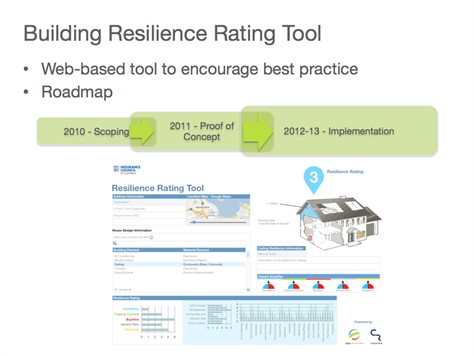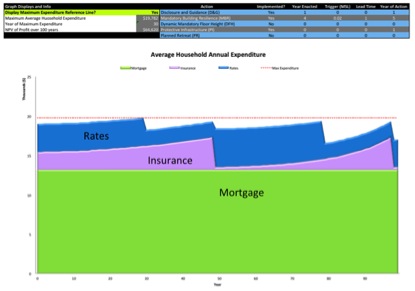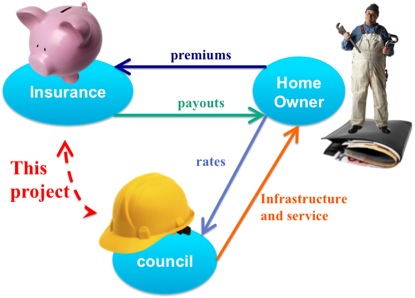

Climate adaptation
Climate adaptation and the built environment
Green Cross Australia is actively operating in the climate adaptation space for the built environment. Some of the partnerships that we are developing include:
Green Star Communities Rating Tool
The Green Building Council of Australia's (GBCA) Green Star - Communities Rating Tool is one of the world's first independent, transparent, national schemes able to assess and certify the sustainability of community-level projects. Green Star - Communities is a voluntary rating tool which provides best practice benchmarks and third-party verification of thesustainability of community and precinct-wide developments.
Released as a pilot in June 2012, the Green Star - Communities
rating tool has been developed by the Green Building Council
ofAustralia (GBCA), in close collaboration with the market,
including all three tiers of government, public and private sector
developers, professional services providers, academia, product
manufacturers and suppliers and otherindustry groups. Green Cross
Australia is a project partner for tool and has contributed to
the
Governance - 6 Adaptation & Resilience credit which encourages
and recognises projects that are resilient to the impacts of a
changing climate and natural disasters by assessing project Climate
Adaptation and Community Resilience initiatives.
The Community Resilience "credit" points are awarded where a
project specific Community Resilience Report (CRP) has been
developed that addresses preparation, during, and post disaster
communication, safety and response in accordance with the
"Community Resilience Report Checklist for developers" developed by
Green Cross Australia as part of the Harden Up - Protecting
Queensland project which is funded by the Natural Disaster
Resilience Program.
The Resilience Taskforce
A project led by Edge Environment for the Insurance
Council of Australia (ICA). Edge Environment is working with
multiple partners to develop a Building Resilience Rating
Tool (BRRT) that uses building material data to provide a
rating of the resilience of a residential building. The rating
provides various levels of detail from a 'headline rating' to
resilience information by building element and weather hazard
category. The tool is currently in pilot phase.
Edge Environment and the ICA are also developing the Australian Resilience Taskforce. It is intended
as a platform for collaboration, and alignment across government,
industry and non-government organizations to enable increased
resilience in Australian communities.

Climate Risk - Adaptation strategies for high risk coastal locations
Climate Risk have been working on a project lead by one of the Australia's largest local councils and joined by the ICA to apply on-line cost benefit analysis models to identify the best adaptation strategies for high risk coastal locations. This is one of the Federal Governments CAP projects.
The results have proven that even where risks from sea level rise and coastal flooding are severe, if councils, insurers and home owners work together it is possible to protect property values and ensure that the total cost of insurance, rates and mortgage remain affordable.
The diagram below shows a test output from the one of the models, showing the effect of different adaptation actions for infrastructure, planning rules and building resilience requirements. Without action insurance would quickly become unaffordable, but if carefully timed or triggered, these actions keep the total costs for insurance, rates and mortgage low and stable for the home owner despite rising sea levels and increasing flood risk.


More information...
Copyright © Green Cross Australia | Terms & Conditions | Privacy Policy
web design brisbane :: (zero)seven
